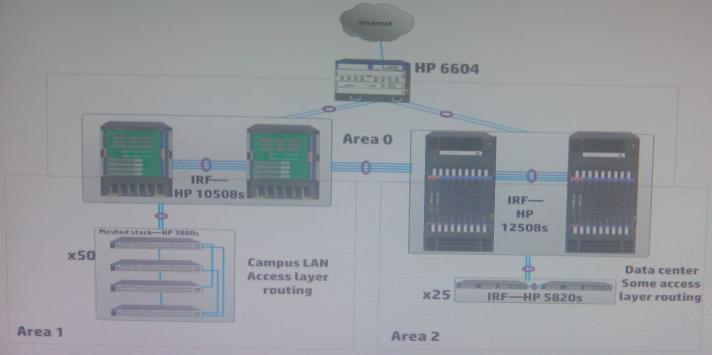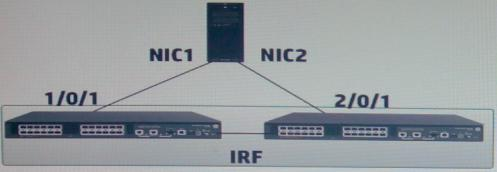Organizations can deploy off-the-shelf, virtualized application on some HP infrastructure devices. Which devices support this capability? (Select two )
- A. HP MSR3000 Routers
- B. HP HSR6800 Routers
- C. HP 7500 Switches
- D. HP 11900 Switches
- E. HP 5400 zl Switches
Answer : A,E
A network architect is working with a customer to implement a new network design. The network architect has learned that the company has a legacy application hosted on a number of legacy servers. The legacy application must remain intact and after the new network implementation. As the company plans to continue using it indefinitely.
With which stakeholder should the network architect discuss the technical detail of the legacy system and any challenges or specifics about maintaining interoperability?
- A. Chief Executive officer (CEO)
- B. Network Architect or Planning Engineer
- C. Chief Information Officer (CIO) or Voice President (VP)/ Director of IT
- D. Chief Financial Officer (CFO) or Voice President (VP)/ Director of Finance
Answer : B
A network architect is planning an update of the server access layer in a data center.
Currently, the access layer switches have 10G links to distribution layer switches. In the new solution, HP 5930 Switches act as top of rack (ToR) switches with 40G links to core switches.
Which factor must the network architect consider when designing solution?
- A. Whether the data center cabling provides enough fiber strands to the racks to support the 40G links
- B. Whether the new switches 40G transceivers are on the chassis front or back, the transceivers must be on the same side as servers air outtakes
- C. Whether the servers connecting to the new switches use Ethernet Virtual Bridging (EVB)/Virtual Ethernet Port Aggregate (VEPA), which is not compatible with 40G
- D. Whether the servers connecting to the new switches have NICs that support Converged Enhanced Ethernet (CEE)
Answer : A
Refer to the exhibit.

A network architect is proposing an HP 6600 series router at the core of this enterprise customer network. The router runs Border Gateway Protocol (BGP) and announces the customer networks to the internet service provider (ISP). The router also runs Open
Shortest Path First (OSPF) to communicate with the rest of the customer network.
What is an appropriate method for the HP 6604 router to advertise routes to the internet to the other routing switches?
- A. The route should redistribute BGP routes OSPF. Areas 1 and 2 should be configured as stub areas to filter out the external routes
- B. The router should advertise BGP routes into OSPF but filter out all routes except the private network that belongs to the customer
- C. The router should redistribute BGP routes into OSPF. The Area Border Routes (ABRs) should summarize those routes for advertisement in areas 1 and 2
- D. The router should advertise a default route as an Autonomous System Router (ASBR) summary to the other routing devices in area 0
Answer : D
Refer to the exhibit.

The exhibit shows how two NICs on a physical server connect to two HP 5820 switches.
The server supports eight virtual machines (VMs) with VMware version 5.1. The VMware standard virtual switch is bound to NIC and NIC2. This switch implements source MAC load balancing for the NIC team.
What is the proper configuration for ports 1/0/1 and 2/0/1?
- A. Place the ports in a bridge aggregation group that does not use LACP
- B. Place the ports in a bridge aggregation group that uses LACP
- C. Enable LACP on the individual ports
- D. Do not place the ports in a bridge aggregation group
Answer : B

